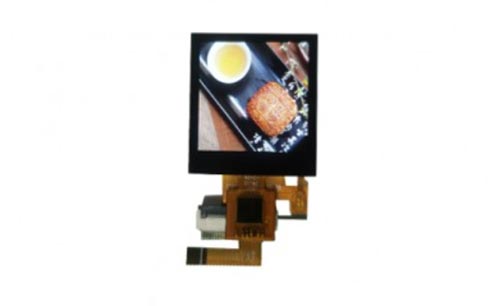What is the difference between LED and TFT?
Views: 444 Update date: Jul 05,2024
Light Emitting Diode (LED) and Thin-Film Transistor (TFT) are two distinct technologies commonly used in the display industry. Here’s a detailed comparison of their key characteristics and applications:
LED:
Functionality: LEDs are semiconductor devices that emit light when an electric current passes through them.
Usage in Displays: Often used as the backlighting for Liquid Crystal Displays (LCDs). The term "LED TV" typically refers to an LCD TV with LED backlighting.
TFT:
Functionality: TFT is a type of LCD that uses thin-film transistor technology to improve image quality.
Usage in Displays: Widely used in computer monitors, televisions, and smartphones due to its ability to control individual pixels.
LED:
Brightness: Offers superior brightness and energy efficiency.
Color Accuracy: Provides vibrant colors with better contrast ratios, especially in modern OLED (Organic LED) variants.
Viewing Angles: Generally offers wide viewing angles with consistent color and brightness.
TFT:
Resolution: Capable of very high resolutions, making it ideal for detailed and sharp displays.
Color Reproduction: Color accuracy and consistency can vary based on the specific type of TFT panel (e.g., IPS, VA).
Response Time: Generally good, making it suitable for fast-moving content like gaming and videos.
LED:
Efficiency: Highly energy-efficient, consuming less power than many other types of display technologies.
Heat Generation: Produces less heat, contributing to longer device lifespan and reliability.
TFT:
Efficiency: Typically consumes more power compared to LED, especially in larger displays.
Heat Generation: Generates more heat, which can affect the overall performance and lifespan of the device.
LED:
Cost: Generally more expensive due to the advanced technology and manufacturing process.
Market Presence: Widely available, with increasing adoption in various devices ranging from small gadgets to large television screens.
TFT:
Cost: More affordable, especially in standard LCD configurations.
Market Presence: Commonly found in budget-friendly devices, as well as high-end monitors and professional displays due to its versatility.
LED:
Televisions: LED TVs and OLED TVs.
Monitors: High-end gaming and professional monitors.
Mobile Devices: Smartphones, tablets with OLED screens.
Lighting: Used in a wide range of lighting solutions beyond displays.
TFT:
Computers: Desktop monitors, laptop screens.
Televisions: Budget to mid-range LCD TVs.
Mobile Devices: Smartphones, tablets with traditional LCD screens.
Specialized Equipment: Medical devices, industrial control panels.
Conclusion
Both LED and TFT technologies play crucial roles in modern display systems, each offering unique advantages. LED displays, particularly those using OLED technology, are preferred for their superior brightness, energy efficiency, and color quality. In contrast, TFT displays are valued for their high resolution, affordability, and broad application range. Understanding these differences can help consumers and professionals choose the right type of display for their specific needs.
1. Technology Basics
LED:
Functionality: LEDs are semiconductor devices that emit light when an electric current passes through them.
Usage in Displays: Often used as the backlighting for Liquid Crystal Displays (LCDs). The term "LED TV" typically refers to an LCD TV with LED backlighting.
TFT:
Functionality: TFT is a type of LCD that uses thin-film transistor technology to improve image quality.
Usage in Displays: Widely used in computer monitors, televisions, and smartphones due to its ability to control individual pixels.
2. Display Quality
LED:
Brightness: Offers superior brightness and energy efficiency.
Color Accuracy: Provides vibrant colors with better contrast ratios, especially in modern OLED (Organic LED) variants.
Viewing Angles: Generally offers wide viewing angles with consistent color and brightness.
TFT:
Resolution: Capable of very high resolutions, making it ideal for detailed and sharp displays.
Color Reproduction: Color accuracy and consistency can vary based on the specific type of TFT panel (e.g., IPS, VA).
Response Time: Generally good, making it suitable for fast-moving content like gaming and videos.
3. Energy Consumption
LED:
Efficiency: Highly energy-efficient, consuming less power than many other types of display technologies.
Heat Generation: Produces less heat, contributing to longer device lifespan and reliability.
TFT:
Efficiency: Typically consumes more power compared to LED, especially in larger displays.
Heat Generation: Generates more heat, which can affect the overall performance and lifespan of the device.
4. Cost and Availability
LED:
Cost: Generally more expensive due to the advanced technology and manufacturing process.
Market Presence: Widely available, with increasing adoption in various devices ranging from small gadgets to large television screens.
TFT:
Cost: More affordable, especially in standard LCD configurations.
Market Presence: Commonly found in budget-friendly devices, as well as high-end monitors and professional displays due to its versatility.
5. Applications
LED:
Televisions: LED TVs and OLED TVs.
Monitors: High-end gaming and professional monitors.
Mobile Devices: Smartphones, tablets with OLED screens.
Lighting: Used in a wide range of lighting solutions beyond displays.
TFT:
Computers: Desktop monitors, laptop screens.
Televisions: Budget to mid-range LCD TVs.
Mobile Devices: Smartphones, tablets with traditional LCD screens.
Specialized Equipment: Medical devices, industrial control panels.
Conclusion
Both LED and TFT technologies play crucial roles in modern display systems, each offering unique advantages. LED displays, particularly those using OLED technology, are preferred for their superior brightness, energy efficiency, and color quality. In contrast, TFT displays are valued for their high resolution, affordability, and broad application range. Understanding these differences can help consumers and professionals choose the right type of display for their specific needs.




